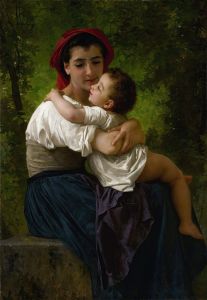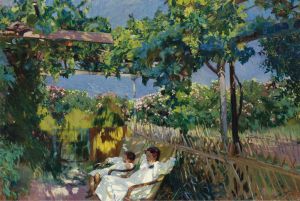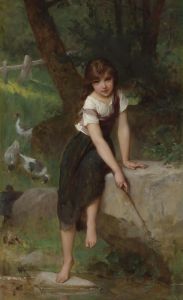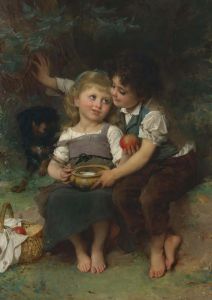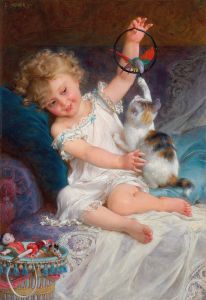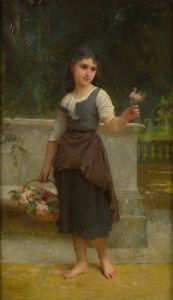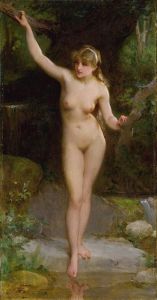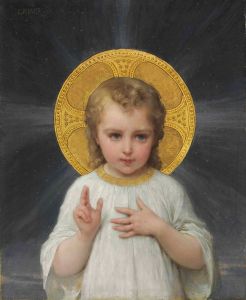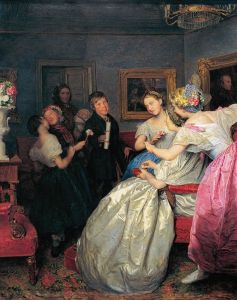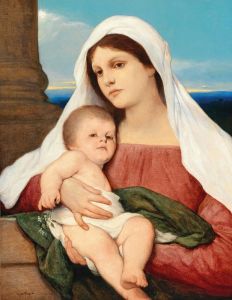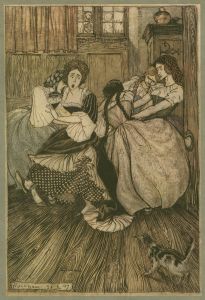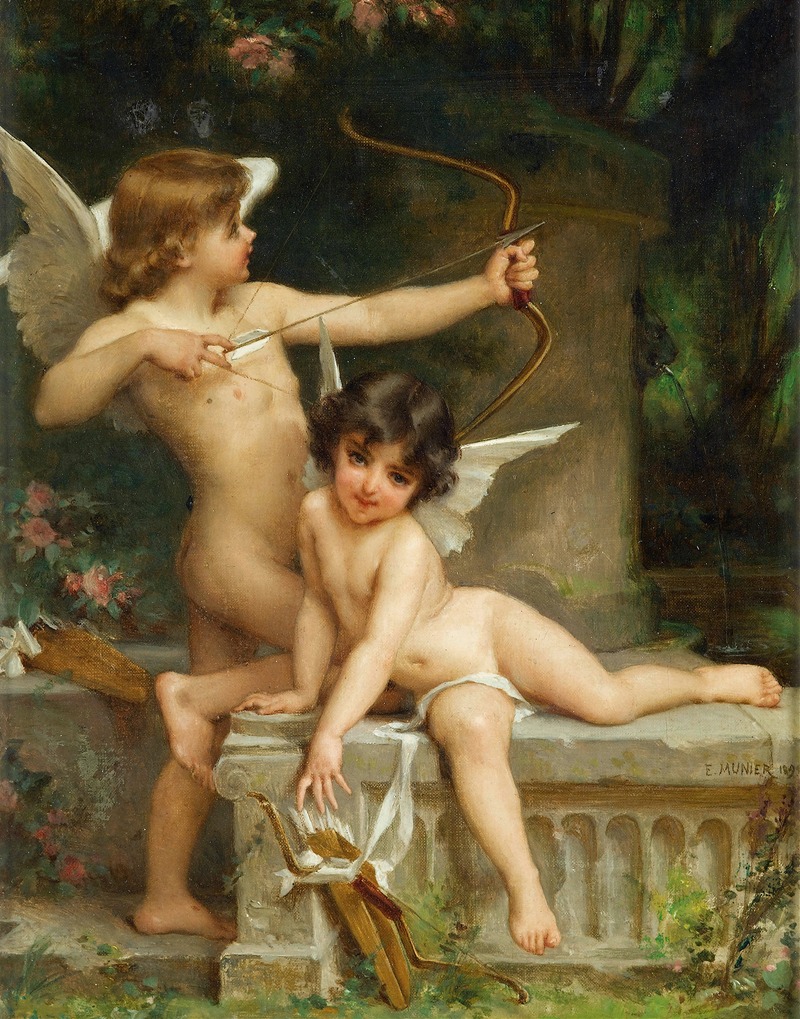
Deux Amours
A hand-painted replica of Émile Munier’s masterpiece Deux Amours, meticulously crafted by professional artists to capture the true essence of the original. Each piece is created with museum-quality canvas and rare mineral pigments, carefully painted by experienced artists with delicate brushstrokes and rich, layered colors to perfectly recreate the texture of the original artwork. Unlike machine-printed reproductions, this hand-painted version brings the painting to life, infused with the artist’s emotions and skill in every stroke. Whether for personal collection or home decoration, it instantly elevates the artistic atmosphere of any space.
Émile Munier was a French academic artist known for his detailed and sentimental paintings, often depicting children and domestic scenes. One of his notable works is "Deux Amours," which translates to "Two Loves" in English. This painting exemplifies Munier's skill in capturing the innocence and charm of childhood, a recurring theme in his oeuvre.
"Deux Amours" is characterized by its delicate portrayal of two cherubic children, often interpreted as representations of love or affection. Munier's attention to detail is evident in the soft rendering of the children's features and the intricate textures of their clothing and surroundings. The painting reflects the influence of the academic art tradition, which emphasized technical skill and adherence to classical standards of beauty.
Munier was a student of William-Adolphe Bouguereau, a leading figure in the academic art movement, and his influence is apparent in Munier's work. Like Bouguereau, Munier had a penchant for idealized figures and smooth, polished surfaces. "Deux Amours" showcases these qualities, with its harmonious composition and the tender interaction between the figures.
The painting is also notable for its use of light and color. Munier employed a soft, diffused light that enhances the gentle mood of the scene. The color palette is typically warm and inviting, with subtle contrasts that add depth and dimension to the work. This approach to light and color is consistent with the academic style, which sought to create lifelike representations that were both aesthetically pleasing and emotionally resonant.
Émile Munier's work, including "Deux Amours," was well-received during his lifetime, and he exhibited regularly at the Paris Salon, the official art exhibition of the Académie des Beaux-Arts in Paris. His paintings were popular among collectors and continue to be appreciated for their technical excellence and emotive qualities.
"Deux Amours" is a testament to Munier's ability to convey the purity and joy of childhood through art. It remains a fine example of 19th-century academic painting, reflecting the values and aesthetics of the period. Munier's work, while rooted in the traditions of his time, also possesses a timeless appeal that continues to resonate with audiences today.
The painting is part of the broader context of 19th-century French art, a period marked by a tension between traditional academic practices and emerging modernist tendencies. While Munier remained firmly within the academic camp, his work nonetheless contributes to the rich tapestry of this dynamic era in art history.
In summary, "Deux Amours" by Émile Munier is a quintessential example of academic art from the 19th century, showcasing the artist's technical prowess and his ability to capture the essence of childhood. Through its delicate composition and masterful use of light and color, the painting continues to be celebrated as a beautiful representation of love and innocence.





